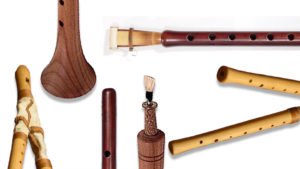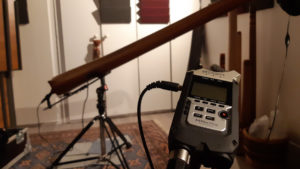During the masterclass I lead, I meet a lot of didgeridoo players who have an approximate tempo. Their phrasing is good and well articulated, but the beat spoils their work. Unfortunately, this is the common lot of musicians who never, or nealy never worked with a metronome. Mozart himself said “the most necessary and the most difficult thing in music is tempo. “. This shows how tough the challenge is!
The metronome is a perfect tool to work the beat, and it is not a coincidence if all great musicians recommend it. Unfortunately its constraining nature leads many players to neglect its use. Thus, here is a metronome plea!
The metronome gives you the structure
What is structure?
It is just the basis of your rhythm, its foundations. Without this framework, the pace has no chance to build itself, and could collapse at any time. Most players have learnt didgeridoo without having played music before (besides flute courses at secondary school, but it does not really count ;-)), and therefore without musical notions. I know what i am speaking of, as I am one of those. Before learning didgeridoo, I did not even know how to tap my foot to the beat during a concert. I had to look around and watch what the public was doing! Tempo is not necessarily a natural aptitude and metronomes help us to develop it. They help anchor the beat in you.
Spot the first beat
In addition of giving the tempo of your rhythm, a metronome also enables you to spot the first beat. The first beat is the spot in a track where all musicians get together. The different rhythmic phrases, breaks, variations, etc, all begin from there. It is therefore essential to keep the first beat in mind in order to ensure the consistency of the track. The metronome helps you to spot it. Besides developing your beat, this tool teaches you to orientate yourself in the abstract world of music.
The metronome gives you more freedom!
Music breathes, its alive, it needs to move. One of the fears of the musician who works with the metronome is to feel trapped in its incessant click and therefore kill the movement. But this is a groundless fear, nothing more. On the contrary, the metronome gives you a space (by creating the structure) and freedom to move in this space. In the same way as classical education: giving too much freedom to a child does not help him. It is well known by all and the principle is exactly the same in music. If you learn to play in a framework, once the first constraints behind, you will quickly realize that you can have fun with that click. You will learn to work around it, to stress your sounds just before or just after. You will play offbeats more easily and you will get back onto the beat suitably. In other words, you will learn to rely on the rigor of the metronome to let the spontaneity of your music spring out. Thanks to its rigidity, the metronome will develop your flexibility!
To conclude
Unless you are an Australian Aboriginal or have grown up in the middle of African drummers endowed with formidable rhythmic precision, you definitely need a small metronome cure! Of course it wouldn’t be productive to use it all the time, but you should really work with it regularly. And, as a bonus, here is a free application ( for iPhone and Android) that I use. You have no more excuses. 😉
Feel free to share your metronome experience or to ask a question in the comments in aim to enrich this article! Nice click to all of you!












